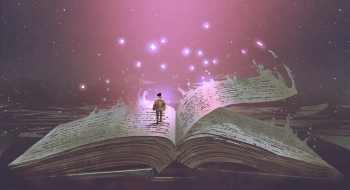12 Different Types of Tones in Writing with Examples

If you want your writing to be as multifaceted and engrossing as possible, it is important that you know how to efficiently use tones. What is tone, though? What makes it so important to the writing process? How do you actually use tone in your writing? This article will answer those questions and so much more.
What is Tone in Writing?
It is the way a writer uses words to convey non-verbal observations about specific subjects. By using specific tones and tone words in your manuscripts and poems, you will be able to convey facts, emotions, and concepts more effectively.
What Is the Importance of Tone in Writing?

Writing tone is very important because it is one of the most effective ways to convey emotion and context to your writing. Tones are a bit tricky to use, though. If you don’t use the right tone, your readers might misunderstand your intent and have a negative perception of you and your writing.
How to Develop Your Writing Tone?
If you want to effectively develop the tone in your writing, you should be willing to experiment with the types of tone. The more you practice with writing tones, the better your writing style will be.
Before you start using specific tones in your writing, it always helps to know which tone is best to use. Below are the 12 most common tones:
- Sad
- Horror
- Pessimistic
- Humorous
- Optimistic
- Joy
- Encouraging
- Cooperative
- Curious
- Worried
- Nostalgic
- Inspirational
It is also important to know the difference between voice and tone. The key difference between voice and tone is that the voice is the unique point of view and choice of words that the author uses in his or her work. The tone on the other hand is the attitude conveyed through the author’s writing.
1. Sad
If you want your readers to be emotionally invested in your writing, it is a good idea to utilize a sad tone in your writing. Sadness is a core emotional state for most people.
We feel sad whenever something unfortunate happens to us or someone close to us. We could also feel sad whenever we empathize with someone.
This person does not need to be close to us either. When you use a sad tone in your writing, your main goal should be to make the reader more sympathetic to your main character.
This empathy will keep them interested in the story.
Examples:
“The pleasure of remembering had been taken from me, because there was no longer anyone to remember with. It felt like losing your co-rememberer meant losing the memory itself. As if the things we’d done were less real and important than they had been hours before.” -John Green, The Fault In Our Stars
“Why do people have to be this lonely? What’s the point of it all? Millions of people in this world, all of them yearning, looking to others to satisfy them, yet isolating themselves. Why? Was the earth put here just to nourish human loneliness?” -Haruki Murakami, Sputnik Sweetheart
“Tonight I can write the saddest lines. I loved her, and sometimes she loved me too.” -Pablo Neruda, Twenty Love Poems and a Song of Despair
2. Horror
Horror is all about surprise and fear. When you use a horror-filled tone, your main intent should be to shock your readers to the core.
Give them a fearful situation that they will have to confront.
Examples:
“Deep into that darkness peering, long I stood there, wondering, fearing, doubting, dreaming dreams no mortal ever dared to dream before.” -Edgar Allan Poe, The Raven
“Eddie discovered one of his childhood's great truths. Grownups are the real monsters, he thought.” -Stephen King, It
“Blood is really warm, it’s like drinking hot chocolate but with more screaming.” -Ryan Mecum, Zombie Haiku: Good Poetry for Your...Brains
3. Pessimistic
Being pessimistic is a state of mind wherein you expect the worst to happen. This does not really show the reality of the situation and is more like a mindset.
Examples:
“All religion, my friend, is simply evolved out of fraud, fear, greed, imagination, and poetry.” -Edgar Allan Poe
“We are all in the gutter, but some of us are looking at the stars.” -Oscar Wilde, Lady Windermere's Fan
“We can complain because rose bushes have thorns, or rejoice because thorns have roses.” -Alphonse Karr, A Tour Round My Garden
4. Humorous
This tone is by far one of the most useful tones because it allows you to draw your readers into the story. It is a very multifaceted tone.
It not only makes your readers laugh, but it also lightens the overall mood of your writing.
Examples:
“You mistake me, my dear. I have a high respect for your nerves. They are my old friends. I have heard you mention them with consideration these twenty years at least.” -Jane Austen, Pride and Prejudice
“Two things are infinite: the universe and human stupidity; and I'm not sure about the universe.” -Albert Einstein
“Never put off till tomorrow what may be done day after tomorrow just as well.” -Mark Twain
5. Optimistic
Like the pessimistic tone, the optimistic tone is more like a state of mind, rather than being a signifier of the reality within the story. The tone usually takes place in the narrator’s mind and is a reaction to a specific situation within the story.
Examples:
“There is nothing sweeter in this sad world than the sound of someone you love calling your name.” -Kate DiCamillo, The Tale of Despereaux
“Don't be pushed around by the fears in your mind. Be led by the dreams in your heart.” -Roy T. Bennett, The Light in the Heart
“How wonderful it is that nobody need wait a single moment before starting to improve the world.” -Anne Frank, Anne Frank's Tales from the Secret Annex: A Collection of Her Short Stories, Fables, and Lesser-Known Writings
6. Joy
Joy is by far one of the purest of all positive emotions and could be used as a specific tone to create a lighter and happier atmosphere in your writing. This type of tone is usually used in character interaction situations and is meant to create a sense of positivity in the story.
Examples:
“Stars are always dancing. Sometimes they dance twinkling away with the rhythm of your joyful heart and sometimes they dance without movement to embrace your heartache as if frozen sculptures of open-armed sadness.” -Munia Khan
“The most wasted of all days is one without laughter.” -Nicolas Chamfort
7. Encouraging
If you are going to use an encouraging tone, you should take a more understanding and supportive frame of mind. The encouraging tone is meant to uplift, and reassure readers.
It could also be used to assuage readers about a specific fear that they have.
Examples:
“So many things are possible just as long as you don’t know they’re impossible.” -Norton Juster, The Phantom Tollbooth
“You've gotta dance like there's nobody watching, Love like you'll never be hurt, Sing like there's nobody listening, And live like it's heaven on earth.” - William W. Purkey
“Be the change that you wish to see in the world.” -Mahatma Gandhi
8. Cooperative
When you use a cooperative tone, you should choose your words as carefully as possible. This type of tone is usually used in the workplace, or in situations where you will need group members to do their part.
The tone should emanate a positive outlook on the job, and compel your audience to do their part.
Examples:
“One cannot be pessimistic about the West. This is the native home of hope. When it fully learns that cooperation, not rugged individualism, is the quality that most characterizes and preserves it, then it will have achieved itself and outlived its origins. Then it has a chance to create a society to match its scenery.” -Wallace Stegner, The Sound of Mountain Water
“I would like to see anyone, prophet, king or God, convince a thousand cats to do the same thing at the same time.” -Neil Gaiman
9. Curious
When you use a curious tone in your writing, your main goal should be to compel your audience to get curious about a specific topic. It could be an unsolved mystery, or an unanswered query, what’s important is that you compel your readers to dig deeper and learn more about the topic.
Examples:
“The best thing for being sad," replied Merlin, beginning to puff and blow, "is to learn something. That's the only thing that never fails. You may grow old and trembling in your anatomies, you may lie awake at night listening to the disorder of your veins, you may miss your only love, you may see the world about you devastated by evil lunatics, or know your honour trampled in the sewers of baser minds. There is only one thing for it then — to learn. Learn why the world wags and what wags it. That is the only thing which the mind can never exhaust, never alienate, never be tortured by, never fear or distrust, and never dream of regretting. Learning is the only thing for you. Look what a lot of things there are to learn.” -T.H. White, The Once and Future King
“I'm really hoping he’s being genuine because I can already tell he isn't the kind of guy a girl gets a simple crush on. He’s the kind of guy you fall hard for, and the thought of that terrifies me. I don’t really want to fall hard for anyone at all, especially someone who’s only making an effort because he thinks I'm easy. I also don’t want to fall for someone who has already branded himself hopeless. But I'm curious. So curious.” -Colleen Hoover, Hopeless
“What about you? What do you do?” I needed to ask questions, draw him out. I needed to find out all the information I could. My voice sounded strong and smooth, but my hands were shaking. I put them in my lap so he couldn’t see. “I prey on innocent villagers and terrify their children,” he said with a nasty smile. “And sometimes when I’m feeling really evil, I read books or paint.” -Kate Avery Ellison, The Curse Girl
10. Worried
This tone’s main intent is to make the reader apprehensive about a character or topic. In order to use a worried tone, you should use specific words and scenarios that will create a sense of unease and anxiety in your readers.
Examples:
“Worry does not empty tomorrow of its sorrow, it empties today of its strength.” -Corrie Ten Boom, Clippings from My Notebook
“The more you pray, the less you'll panic. The more you worship, the less you worry. You'll feel more patient and less pressured.” -Rick Warren, The Purpose of Christmas
“The whole thing is quite hopeless, so it's no good worrying about tomorrow. It probably won't come.” -J R R Tolkien, The Return of the King
11. Nostalgic
A nostalgic tone is meant to evoke a fondness for times long past. This is a useful tone if you have your characters reminiscing about their younger days or the way things were when they were younger.
This tone could also be used if you are writing about specific eras such as the 70s or 80s.
Examples:
“It is an illusion that youth is happy, an illusion of those who have lost it; but the young know they are wretched for they are full of the truthless ideal which have been instilled into them, and each time they come in contact with the real, they are bruised and wounded. It looks as if they were victims of a conspiracy; for the books they read, ideal by the necessity of selection, and the conversation of their elders, who look back upon the past through a rosy haze of forgetfulness, prepare them for an unreal life. They must discover for themselves that all they have read and all they have been told are lies, lies, lies; and each discovery is another nail driven into the body on the cross of life.” -W. Somerset Maugham, Of Human Bondage
“It is strange how we hold on to the pieces of the past while we wait for our futures.” -Ally Condie, Matched
12. Inspirational
This tone is meant to inspire readers to commit to a task or ideal. This could be used in a story where your main character calls his comrades to fight for an ideal.
It could also be used in self-help books where you call on your reader to strive for something. Just make sure that you don’t overdo it with the inspirational language because it might sound corny.
Examples:
“Fairy tales are more than true: not because they tell us that dragons exist, but because they tell us that dragons can be beaten.” -Neil Gaiman, Coraline
“Darkness cannot drive out darkness: only light can do that. Hate cannot drive out hate: only love can do that.” -Martin Luther King Jr., A Testament of Hope: The Essential Writings and Speeches
Conclusion
When it comes to making your writing as effective as possible, it is important that you know how to use tones. By using these tones in your manuscripts and poems, you will be able to add a whole new facet to your writing.
Remember though, that these are not the only tones out there. If you want to further expand your writing prowess, it is a good idea to experiment with other tones.
Become a Self-Published Author in 3 Simple Steps
Powered by Experts, Published by You. Reach 40,000+ Retailers & Libraries Around the World. Concierge Service. Tailored Packages. BBB Accredited Business. 100% Royalty Program.


